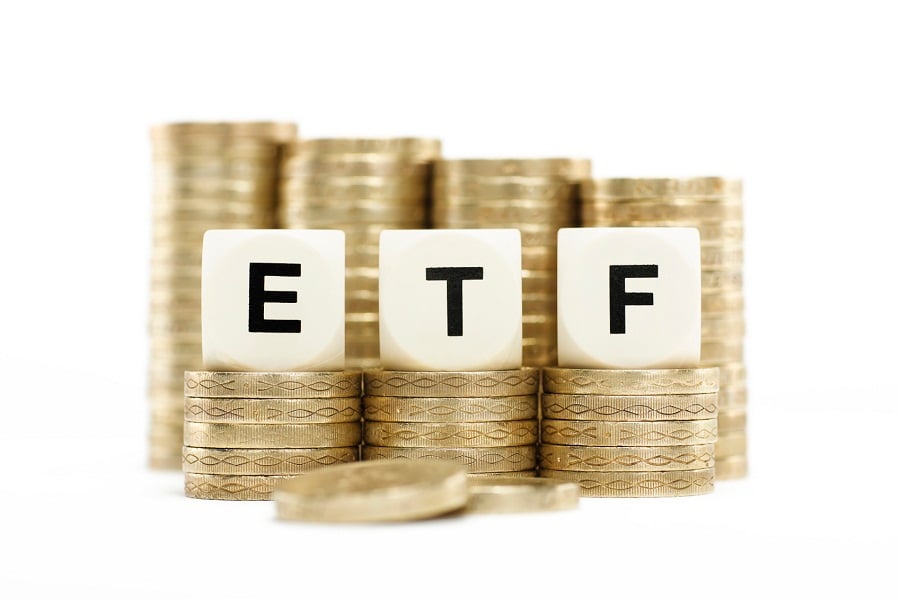

Beyond the pandemic, violent social unrest, and the extra-contentious presidential election that seemed to place a wet blanket on just about everything, the uplifting story of 2020 in financial services was exchange-traded funds.
Helped along by a surprisingly resilient bull market and a plethora of no-fee trading platforms, ETFs stand out as the darling of investors in a year that suffered so many dark clouds.
With total ETF assets surpassing $5 trillion and projected to eclipse the shrinking market share of mutual fund assets within a half dozen years, the category appears to have nothing but momentum.
“A growing number of folks came to saw the benefits of ETFs in 2020,” said Todd Rosenbluth, director of mutual fund and ETF research at CFRA.
Many of the things that helped drive assets into ETFs in 2020 are just ramping, which means the next leg of the ETF growth spurt might be just getting started.
Beyond the benefits of much lower fees that can benefit even plain-vanilla strategies, the ETF space is bursting with examples of chart-topping performance, particularly across select thematic strategies.
It wasn’t just themes tied to climate change that caught the wave.
The trend toward remote work drove Global X Cloud Computing ETF (CLOU) up more than 66%, while Wisdom Tree Cloud Computing ETF (WCLD) gained nearly 100%.
Rosenbluth said financial advisers, as the biggest users of ETFs, are increasingly recognizing the value of thematic ETFs as a tool for targeting exposure and customizing portfolios for clients.
In terms of threats to the traditional mutual fund space, the year ahead is expected to see more growth among semitransparent ETFs.
The actively managed strategies that don’t disclose portfolio holdings throughout the day like traditional ETFs came onto the scene in early 2020 with much fanfare but so far not much traction.
There are currently 15 such funds on the market, with many more in the works and anticipated.
According to Cerulli Associates, 79% of U.S. ETF issuers are currently planning their own versions of semitransparent ETFs, despite only 3% of ETF assets currently held in such products.
Even if semitransparent ETFs haven’t taken off yet, the potential is clear to firms like T. Rowe Price, Dimensional Fund Advisors, Guinness Atkinson, Fred Alger, and Gabelli, all of which represent traditional mutual fund complexes finding ways to enter the ETF space.
“It’s becoming harder for mutual fund firms to not offer an ETF option,” Rosenbluth said.
Jonathan Gibbons, founding partner and president of Vigtec, a mobile investing platform, acknowledged the momentum that has carried into 2021, but he isn’t ready to bury mutual funds just yet.
“To discount active investing in the next five years could be potentially quite premature when volatility compression has been so prevalent for so long in the markets creating many unintended consequences,” he said. “If volatility suppression is prevalent again in 2021, you could continue to see ETF growth. But if volatility compression fails or is overwhelmed in 2021 and we experience prolonged periods of realized volatility, you will see significant struggles as ETFs under perform against (actively-managed) mutual funds in that environment.”

Relationships are key to our business but advisors are often slow to engage in specific activities designed to foster them.

Whichever path you go down, act now while you're still in control.

Pro-bitcoin professionals, however, say the cryptocurrency has ushered in change.

“LPL has evolved significantly over the last decade and still wants to scale up,” says one industry executive.

Survey findings from the Nationwide Retirement Institute offers pearls of planning wisdom from 60- to 65-year-olds, as well as insights into concerns.
Streamline your outreach with Aidentified's AI-driven solutions
This season’s market volatility: Positioning for rate relief, income growth and the AI rebound
